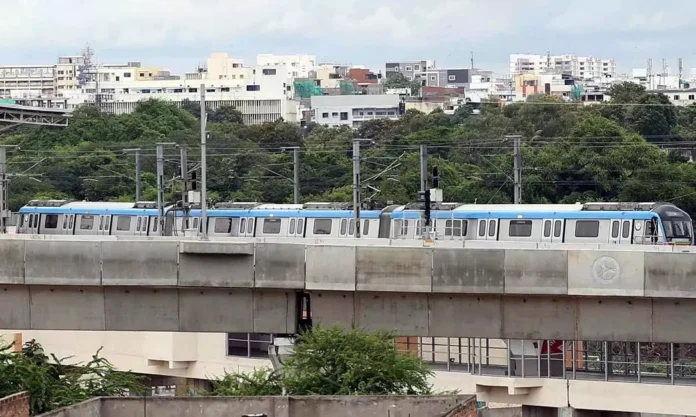Hyderabad Metro’s Missing Link in City Beautification Drive
While Hyderabad’s ongoing beautification initiatives have garnered praise for transforming the city’s visual appeal, one prominent entity remains notably absent from the conversation: Hyderabad Metro Rail. Despite the city’s metro system being a sleek and modern form of public transport, its involvement in the beautification efforts has been minimal, with the responsibility for aesthetic enhancements seemingly shifting between L&T Metro Rail and Hyderabad Metro Rail Limited (HMRL), creating a gap in civic development.
The city’s civic authorities have invested a substantial ₹150 crore towards the beautification of 224 key structures across Hyderabad and Secunderabad. These visual upgrades, including murals, artistic pillars, and vibrant public spaces, have been well-received by citizens and visitors alike. Yet, the metro, a modern and high-profile part of the city’s infrastructure, has remained indifferent to these initiatives. In fact, the art adorning some of the metro pillars in Begumpet dates back to 2018, and no substantial updates have been seen since then. A senior official from HMRL attributes this lack of progress to a dearth of funds, citing the organisation’s limited budget despite the public-private partnership model. “Our focus is primarily on operations, and beautification is not something we have the resources for at this moment,” the official said.
Interestingly, this rationale seems somewhat outdated when compared to the actions of other metro systems in the country. The Chennai Metro Rail, for example, recently began painting its pillars as part of the beautification efforts tied to the launch of its Phase 2 project. Delhi Metro, too, demonstrated its commitment to aesthetic enhancement ahead of the G20 Summit in 2023, by decorating its stations and pillars with striking visual art. These initiatives highlight the growing importance of incorporating art and design in public transport spaces, and they serve as a reminder of the role metros can play in enhancing the urban environment.
This gap in Hyderabad Metro’s engagement with the city’s beautification project brings into focus the potential missed opportunity for urban regeneration. The metro’s involvement in these efforts would not only uplift the visual appeal of the city but also contribute to the broader goal of sustainable urban development. Sustainable cities are those that integrate efficient public transport systems with aesthetics and culture, contributing to the overall well-being of their residents. Metro systems, in particular, are pivotal to this vision, providing not just a mode of transportation but also acting as symbols of modernity and progress.
From a sustainability perspective, the absence of such aesthetic interventions raises questions about the metro’s role in fostering a greener, more livable city. Incorporating art, greenery, and community-driven beautification projects into metro infrastructure could significantly enhance the city’s ecological footprint, offering an opportunity to blend functional transportation with environmental sustainability. Furthermore, it would increase the emotional connection citizens have with their metro system, making it not just a utilitarian mode of travel but an integral part of the city’s identity.
As urbanisation continues to shape Hyderabad’s future, public transport systems like the metro must evolve beyond their primary function of commuting. They must also serve as pillars of civic pride, environmental consciousness, and cultural identity. In this respect, Hyderabad Metro’s current stance on beautification appears to be a missed opportunity in a city otherwise making strides towards becoming a modern, sustainable urban hub.



